Green infrastructure makes our community more resilient to climate change and offers a wide range of co-benefits
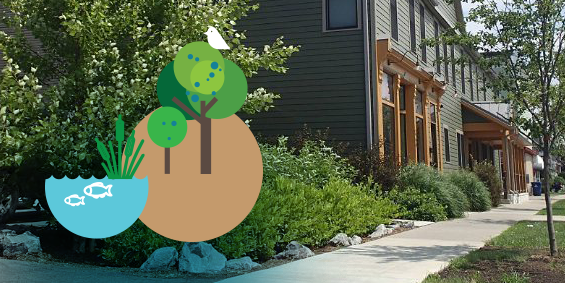 Adaptation and Mitigation
Adaptation and Mitigation
Green infrastructure incorporates natural elements into urban environments. These natural areas provide vegetation and soils that can help reduce air temperatures, purify the air, and provide habitat for wildlife to enhance bio-diversity. Nature based solutions such as green infrastructure reduce greenhouse gases through carbon sequestration and avoided energy use and also provide adaptation benefits by making our city more resilient to larger storm events and rising temperatures.
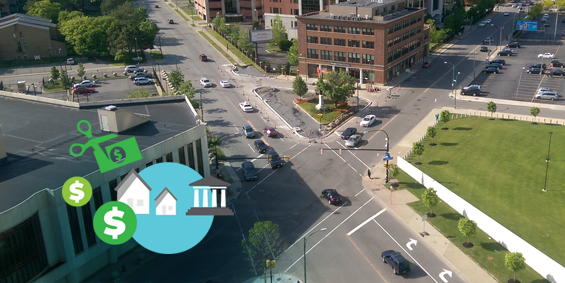 Green infrastructure offers public and private cost savings
Green infrastructure offers public and private cost savings
Compared to gray infrastructure, the costs of installing and maintaining green infrastructure are often lower, which saves local governments, private developers, and taxpayers money. Some green infrastructure strategies allow property owners, especially households, to cut down on water usage and save money on energy bills.
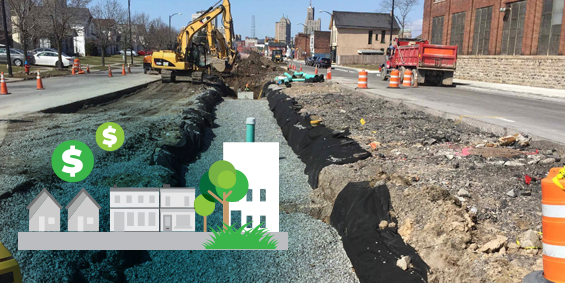 Directs public investment into neighborhoods
Directs public investment into neighborhoods
Unlike conventional stormwater infrastructure, green infrastructure directs public investments above ground and in neighborhood spaces across the city. Neighborhood greening initiatives in underinvested communities are an important strategy to reverse historical legacies of disinvestment.
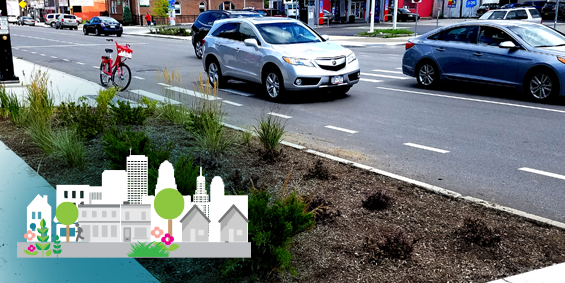 Enhances community aesthetics
Enhances community aesthetics
Green infrastructure features improve the local aesthetics of a community. When incorporated into neighborhood business districts or major transportation corridors, green infrastructure can help beautify and revitalize areas, making them more attractive to private investment.
 Supports public health and recreation
Supports public health and recreation
By improving pathways, creating places to gather, and providing shade during warm weather, trees and other green spaces promote active recreation and decrease air pollution. As part of compact development strategies, green infrastructure supports walkable communities and helps cultivate a strong sense of place and well-being.
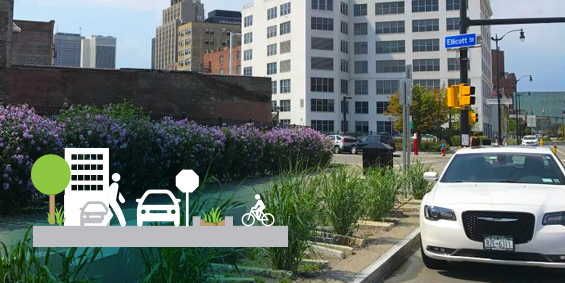 Improves public safety
Improves public safety
Green infrastructure features can support public safety by enhancing traffic calming measures like bump outs and bike lanes that make streets safer for pedestrians and bicyclists. Some green infrastructure strategies also remove hazardous structures and green vacant lots, which can create a sense of place and improve neighborhood safety.
 Cultivates public education and engagement opportunities
Cultivates public education and engagement opportunities
Green infrastructure is above ground, allowing people to see and touch installations in their communities and creating unique opportunities to develop public awareness around the importance of sustainable water management. The installation and management of green infrastructure projects thrive on community participation and partnership, with many opportunities to include residents, property owners, community groups, and neighborhood volunteers in the development process.
 Creates green job opportunities
Creates green job opportunities
Implementing green infrastructure creates a wide variety of green job opportunities. Each project involves a range of design professionals, construction workers and maintenance teams. The green infrastructure job ladder can eliminate barriers for under-represented community members and actively support an equitable and inclusive workforce.

